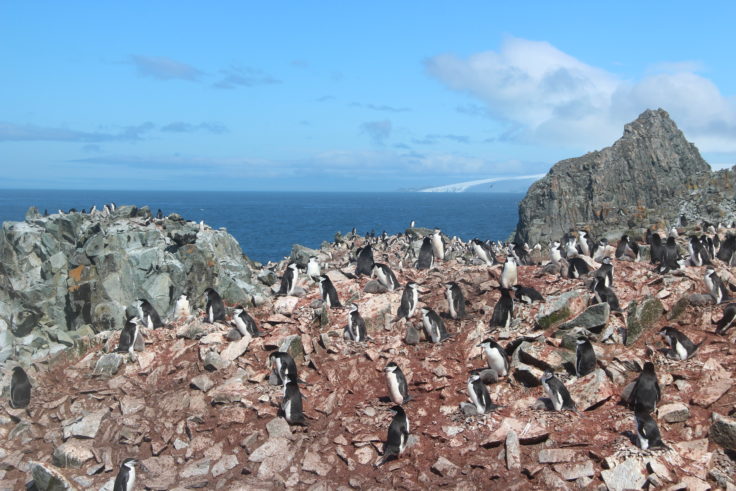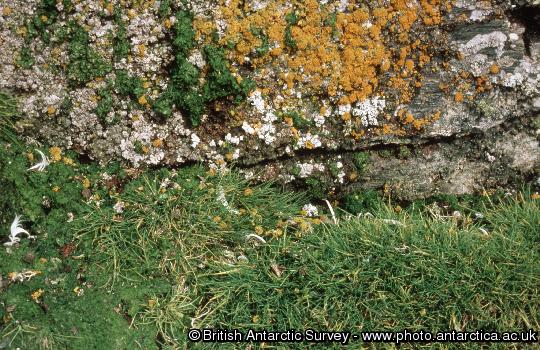Seal and penguin poo is major driver of Antarctic terrestrial biodiversity
A new study by BAS scientists and collaborators in the Netherlands shows that seal and penguin poo is key to Antarctic biodiversity on land. By studying concentrations of nitrogen-rich guano around breeding colonies on the Antarctic Peninsula, they found fertile hotspots that were up to 240 times the size of the colony itself and extended more than 1000 metres beyond the source. The study is published in the journal Current Biology this month (10 May 2019).
“What we see is that the poo produced by seals and penguins partly evaporates as ammonia,” says Dr. Stef Bokhorst, lead author from the Department of Ecological Sciences at Vrije Universiteit Amsterdam. “Then, the ammonia gets picked up by the wind and is blown inland, and this makes its way into the soil and provides the nitrogen that primary producers need in order to survive in this landscape.”
These nutrients feed algae, mosses and lichens that in turn feed and shelter invertebrates such as springtails and mites. “You can find millions of them per square metre here, but in grasslands in the U.S. or Europe, there are only about 50,000 to 100,000 per square meter,” says Bokhorst. “It took months and months of sitting in the lab counting and IDing them under a microscope,” he says.

Professor Pete Convey of British Antarctic Survey emphasises that:
“Surprisingly little is still known about the distribution and abundance of terrestrial biodiversity in Antarctica, although nutrient limitation is a severe constraint on ecosystem development. A particularly important aspect of this study is that it gives us a proxy for predicting where terrestrial biodiversity hotspots are, something that is vital in improving conservation strategies in the region”.
There is also concern from researchers that rising temperatures as a result of climate change will lead to invasive species colonising parts of Antarctica, and these nutrient hotspots could be particularly vulnerable. At present Antarctica is too cold and dry to support many invasive plants and animals but, as temperatures rise, the risk of them gaining a foothold increases.

“Just as the penguin and seal colonies enrich the soil for native organisms, it’s also possible that they are making it ideal for invasive species as well, and hardy invading plants could provide shelter for predatory insects like spiders and beetles,” says Bokhorst. “Right now, the system is too unproductive to support any pest mammals like rats and mice.”
Convey continues:
“We know that invasive species can be introduced by humans through various mechanisms, particularly in association with shipping, cargo, fresh foodstuffs and personal clothing and equipment, and that these routes far outweigh natural colonisation such as being blown in on the wind from South Africa or South America, or carried in bird plumage. This research emphasises the importance of monitoring the role of breeding colonies in aiding invasive species establishment, and so again helping to shape future prevention and conservation measures.”
Nitrogen inputs by marine invertebrates drive abundance and richness in Antarctic Terrestrial ecosystems by Stef Bokhorst, Pete Convey and Rien Aerts is published in the journal Current Biology. Read the paper here